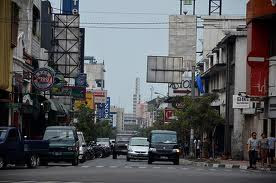the History of Bandung
Pajajaran Era
In 1488, the area now named Bandung was the capital of the Kingdom of Padjajaran. But from ancient archeological finds, we know the city was home to Australopithecus, Java Man. These people lived on the banks of the Cikapundung in north Bandung, and on the shores of the Great Lake of Bandung. Flint artifacts can still be found in the Upper Dago area and the Geological Museum has displays and fragments of skeletal remains and artifacts.
The Sundanese were a pastoral people farming the fertile regions of Bandung. They developed a lively oral tradition which includes the still practiced Wayang Golek puppet theatre, and many musical forms. "There is a city called Bandung, comprising 25 to 30 houses," wrote Juliaen de Silva in 1614.
Ducth Colonial Era
The achievements of European adventurers to try their luck in the fertile and prosperous Bandung area, led eventually to 1786 when a road was built connecting Jakarta, Bogor, Cianjur and Bandung. This flow was increased when in 1809 Louis Napoleon, the ruler of the Netherlands, ordered Governor General H.W. Daendels, to increase defences in Java against English. The vision was a chain of military defense units and a supply road between Batavia and Cirebon. But this coastal area was marsh and swamp, and it was easier to construct the road further south, across the Priangan highlands.
The Groote Postweg (Great Post Road) was built 11 miles north of the then capital of Bandung. With his usual terseness, Daendels ordered the capital to be relocated to the road. Bupati Wiranatakusumah II chose a site south of the road on the western bank of the Cikapundung, near a pair of holy wells, Sumur Bandung, supposedly protected by the ancient goddess Nyi Kentring Manik. On this site he built his dalem (palace) and the alun-alun (city square). Following traditional orientations, Mesjid Agung (The Grand Mosque) was placed on the western side, and the public market on the east. His residence and Pendopo (meeting place) was on the south facing the mystical mountain of Tangkuban Perahu. Thus was The Flower City born.
Around the middle of the l9th Century, South American cinchona (quinine), Assam tea, and coffee was introduced to the highlands. By the end of the century Priangan was registered as the most prosperous plantation area of the province. In 1880 the rail line connecting Jakarta and Bandung was completed, and promised a 2 1/2 hour trip from the blistering capital in Jakarta to Bandung.
With this life changed in Bandung, hotels, cafes, shops sprouted up to serve the planters who either came down from their highland plantations or up from the capital to frolic in Bandung. The Concordia Society was formed and with its large ballroom was the social magnet for weekend activities in the city. The Preanger Hotel and the Savoy Homann were the hotels of choice. The Braga became the promenade, lined with exclusive Europeans shops.
With the railroad, light industry flourished. Once raw plantation crops were sent directly to Jakarta for shipment to Europe, now primary processing could be done efficiently in Bandung. The Chinese who had never lived in Bandung in any number came to help run the facilities and vendor machines and services to the new industries. Chinatown dates from this period.
In the first years of the present century, Pax Neerlandica was proclaimed, resulting in the passing of military government to a civilian one. With this came the policy of decentralization to lighten the administrative burden of the central government. And so Bandung became a municipality in 1906.
This turn of events left a great impact on the city. City Hall was built at the north end of Braga to accommodate the new government, separate from the original native system. This was soon followed by a larger scale development when the military headquarters was moved from Batavia to Bandung around 1920. The chosen site was east of City Hall, and consisted of a residence for the Commander in Chief, offices, barracks and military housing.
By the early 20's the need for skilled professionals drove the establishment of the technical high school that was sponsored by the citizens of Bandung. At the same time the plan to move the capital of the Netherlands Indies from Batavia to Bandung was already mature, the city was to be extended to the north. The capital district was placed in the northeast, an area that had formerly been rice fields, and a grand avenue was planned to run for about 2.5 kilometers facing the fabled Tangkuban Perahu volcano with Gedung Sate at the south end, and a colossal monument at the other. on both sides of this grand boulevard buildings would house the various offices of the massive colonial government.
Along the east bank of the Cikapundung River amidst natural scenery was the campus of the Technische Hoogeschool, dormitories and staff housing. The old campus buildings and its original landscaping reflect the genius of its architect Henri Maclain Pont. The southwestern section was reserved for the municipal hospital and the Pasteur Institute, in the neighborhood of the old quinine factory. These developments were carefully planned down to the architectural and maintenance details. These years shortly before World War II were the golden ones in Bandung and those alluded to today as Bandung Tempoe Doeloe.
Post-Independence Era
After Indonesian independence, Bandung was named as the provincial capital of West Java (Jawa Barat). Bandung was the site of the Bandung Conference which met April 18-April 24, 1955 with the aim of promoting economic and cultural cooperation among the African and Asian countries, and to counter the threat of colonialism or neocolonialism by the United States, the Soviet Union, or other imperialistic nations.
Source : www.bandungtourism.com
Labels:
About
Subscribe to:
Post Comments (Atom)



No comments:
Post a Comment